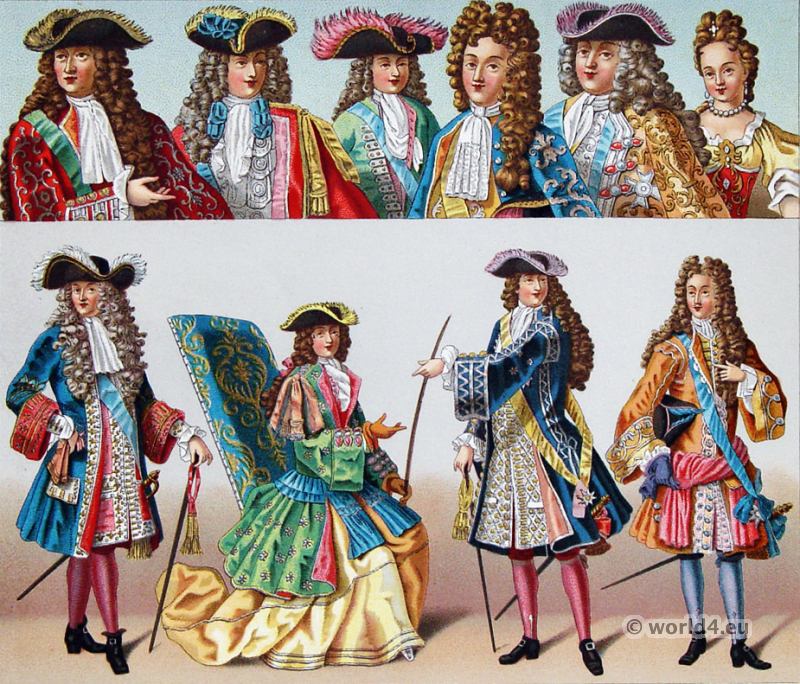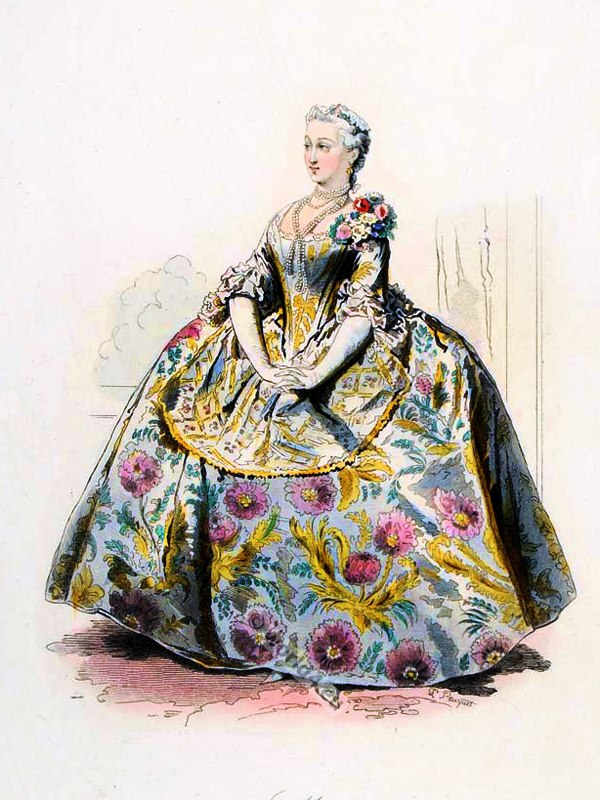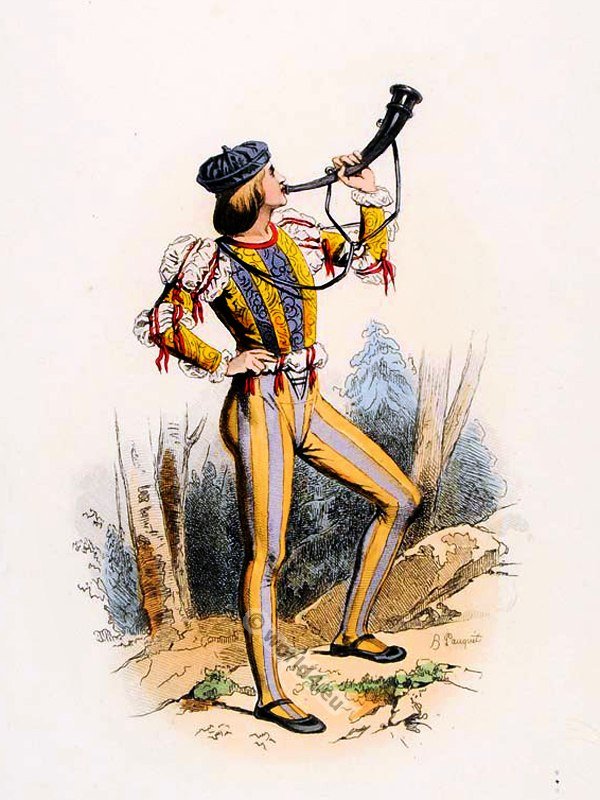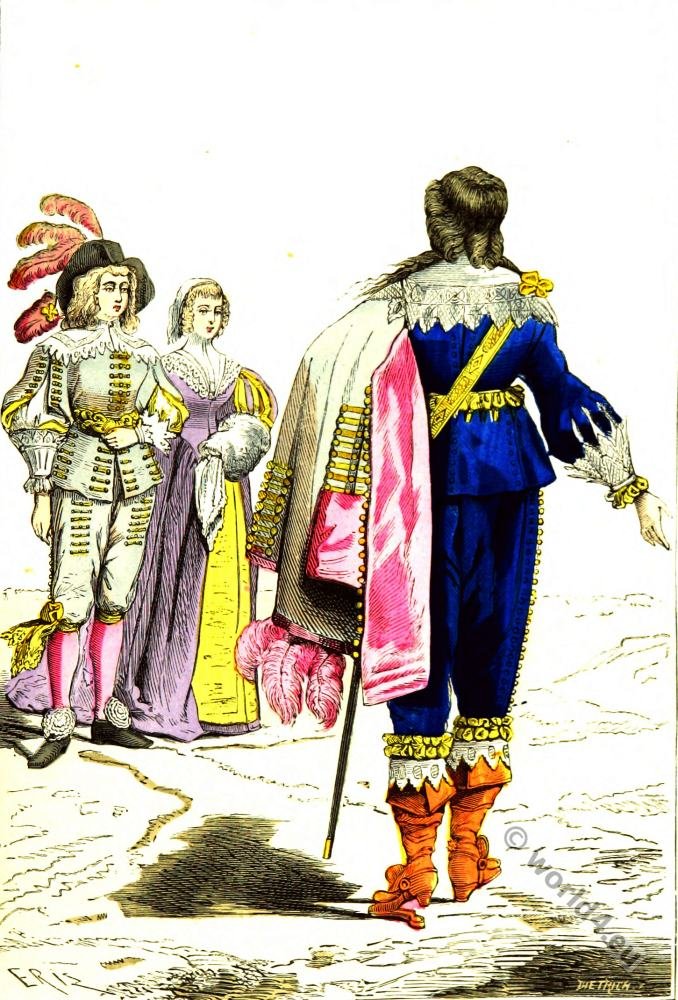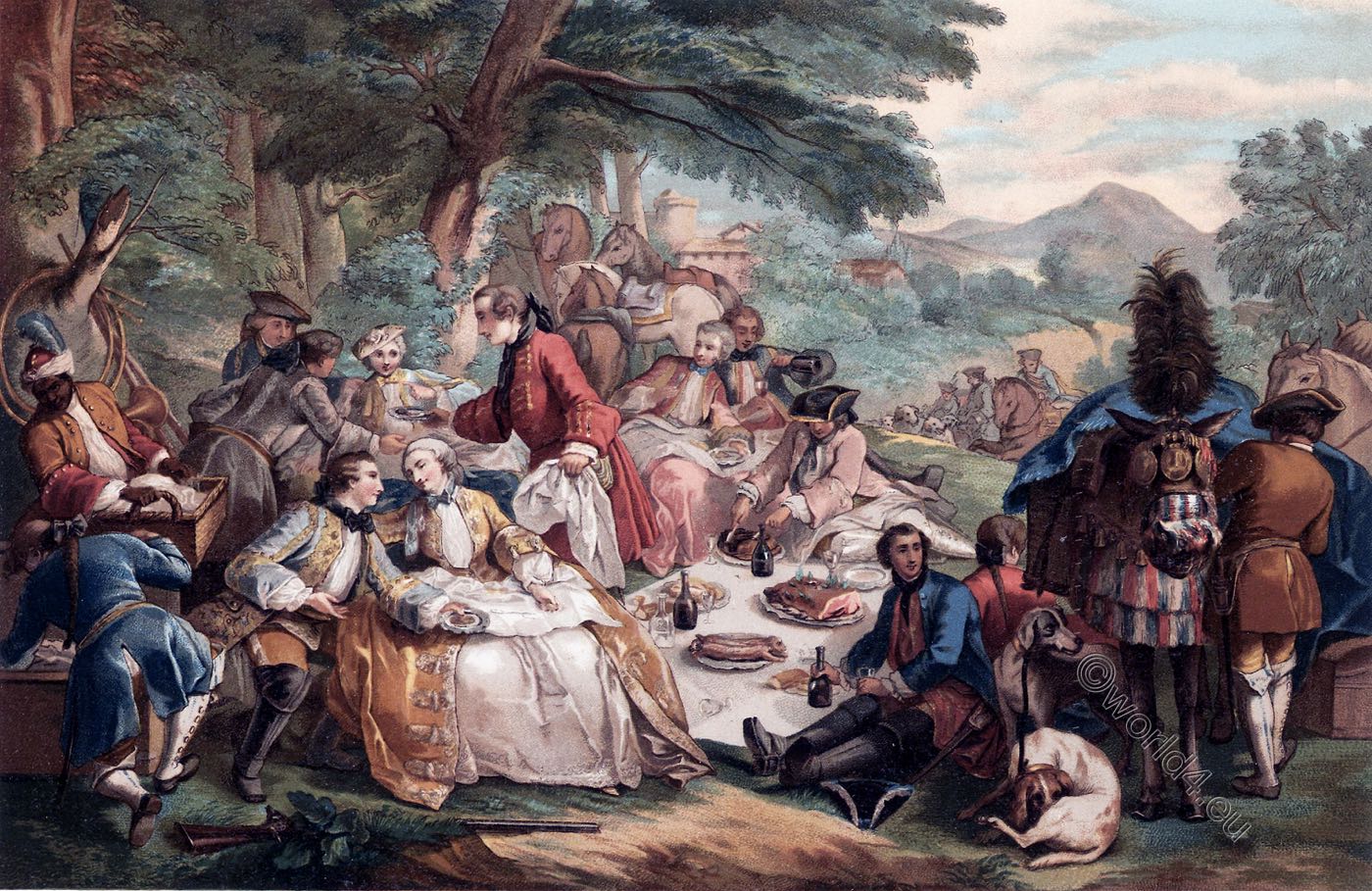FRANCE XVII. CENTURY. FEMALE FASHION. SECOND HALF OF THE GOVERNMENT OF LUDWIG XIV.
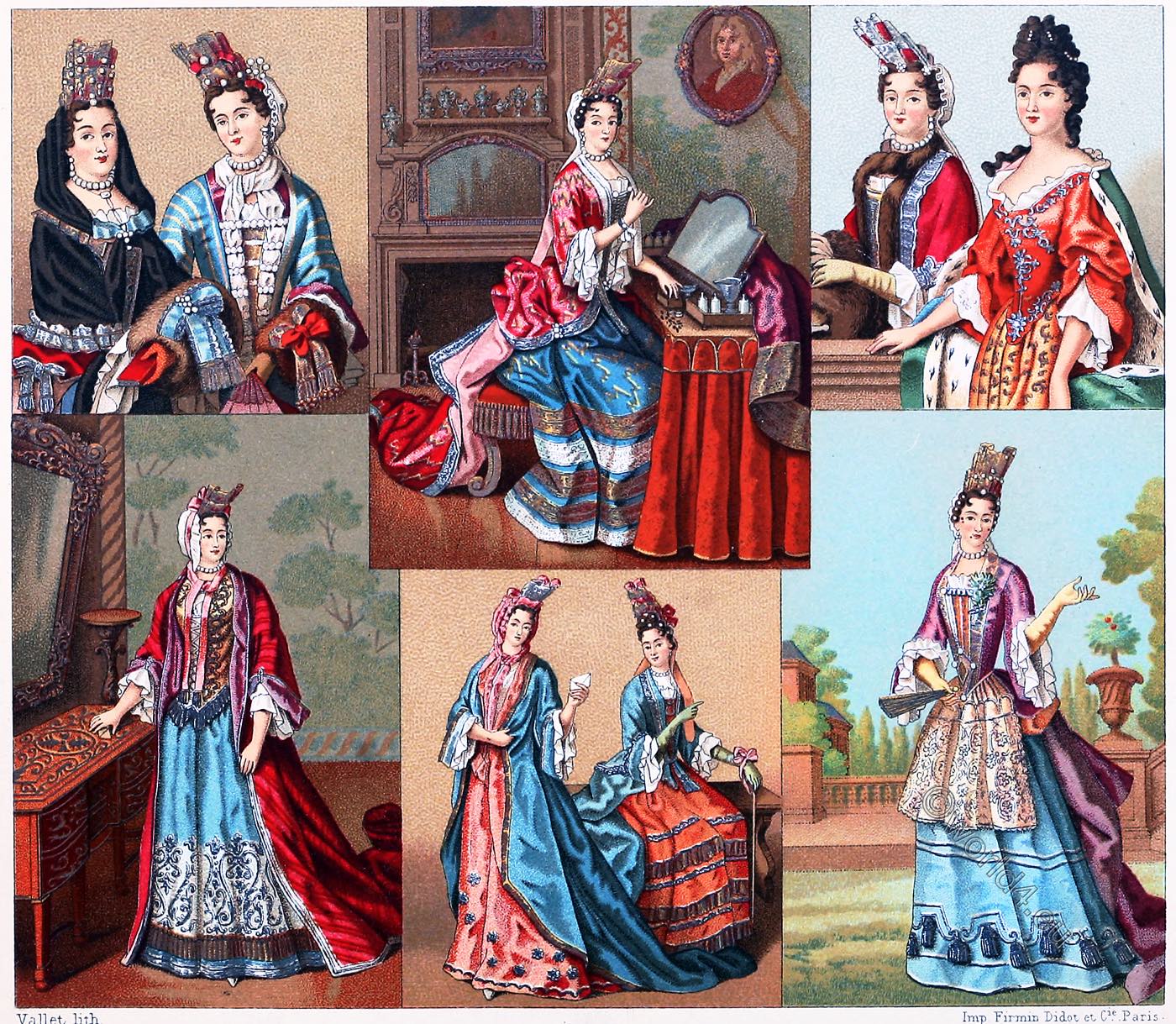
THE CAPOTTE, THE MUFF, THE BASKINE, THE HOUSE DRESSES, ETC.
(From top left to right)
No. 1. The cope or the head scarf; the muff.
The cope served as a headgear in bad weather or was worn around the shoulder when going out in morning dress. It was garnished with furbelows. – The muff was usually decorated with a wide bow. Madame de Maintenon is in a street costume; fontange with a gilded, beaded frame; on the forehead two curls called cruches, pearl necklace (esclavage) and diamond cross; on the edge of the bodice the tâtez-y; red baskine with bows on the sides; gloves; muff with bow.
No. 2. Scarf à la Steinkerque.
The scarf à la Steinkerque came into fashion after the battle of Steenkerke*. Surprised by the battle, the princes had only just had time to loosely wrap their scarf around them.
The Princess Conti wears the fontange with a circle of stars; long waist with band puffs; blue-striped bodice with purple lapels; muff with bow; gloves; fan.
*Battle on 3 August 1692. War of the League of Augsburg. Start of the Steenkirk fashion.
No. 3. Wardrobe of a lady of high rank.
The Countess de Mailly wears the fontanga à cornettes with a gilded frame; pearls in her hair; earrings; pearl necklace; bracelet in the shape of a bow; gourgandine, laced corset open at the front; waist with half-sleeves, decorated with linon (cotton fabric); at the bodice, large puffed lobes, which cover the attachment of the train, by means of a kind of tourniquet (griarde).
No. 4. The Palatine and the Casaquin.
The Palatine owes its name to the second wife of the Duke of Orleans, Elisabeth Charlotte of the Palatinate. She covered the neck with lace in summer and marten fur in winter. The Casaquin, a jacket with bulging laps, was worn over the bodice.
Mrs. Princess Conti in winter costume wears the fontange of lace and red fabric, pearl agraffes in her hair, pearl necklace, marten skin palatine, closed bodice, casaquin with lace, muff with bow, gloves.
No. 5. Society wardrobe.
The high hairstyle of the Princess of Chartres* is the monte-au-ciel; cut-out bodice; wide sleeves gathered with a diamond griffin; gold-tufted skirt; train, lined with ermine, attached to the shoulder.
*Françoise Marie de Bourbon 1677-1749 (Mademoiselle de Blois), daughter of Louis XIV.
No. 6. House suit in winter.
The Countess of Montfort wears a low fontange with a bonnet closing the hair, pearl necklace, tie à la Steinkerque, gourgandine, veiled bodice open and laced at the front, blue skirt embroidered in silver and gold, long dressing gown with purple lapels.
No. 7. House suit in summer.
Hair like No. 6. tie à la Steinkerque; pink skirt with silver embroidery; dressing gown with gold trimming.
No. 8. The ladies’ walking stick with hand bow.
The Countess Egmont, née Princess of Aremberg, in a promenade costume; fontange, diamond button in her hair, pearl necklace, closed corset, blue lap bodice embroidered with silver; double cuffs; apronted train; red skirt with embroidered stripes; long green gloves.
No. 9. The lace apron.
It was made of silk interwoven with metal threads and was worn in the house and garden.
The Duchess of Aiguillon wears pearls in the fontange and in her hair, pointed waist with gold brocade; blue robe with silver embroidery; lace apron; at the top of the bodice a bouquet.
Illustrations after engravings by Bonnart, Mariette, Trouvain and others. The coloured originals are in the possession of Mr Ovigneur in Lille.
Compare Quicherat, Histoire du costume en France. – Paul Lacroix, Dix-eeptième siècle, Institutions, Usages et Costumes.
Source: History of the costume in chronological development by Auguste Racinet. Edited by Adolf Rosenberg. Berlin 1888.
Related
Discover more from World4 Costume Culture History
Subscribe to get the latest posts sent to your email.

